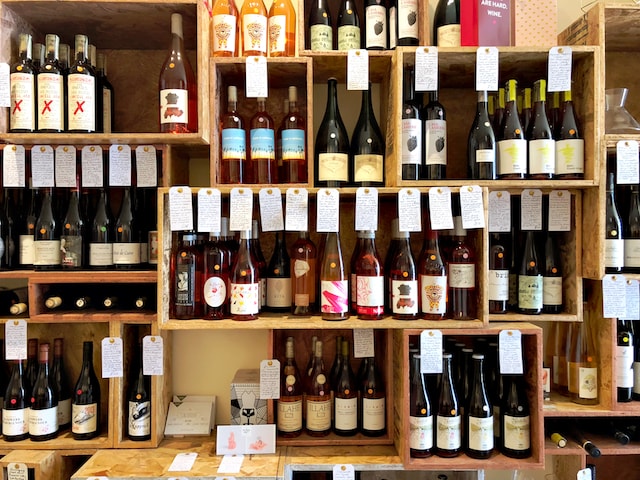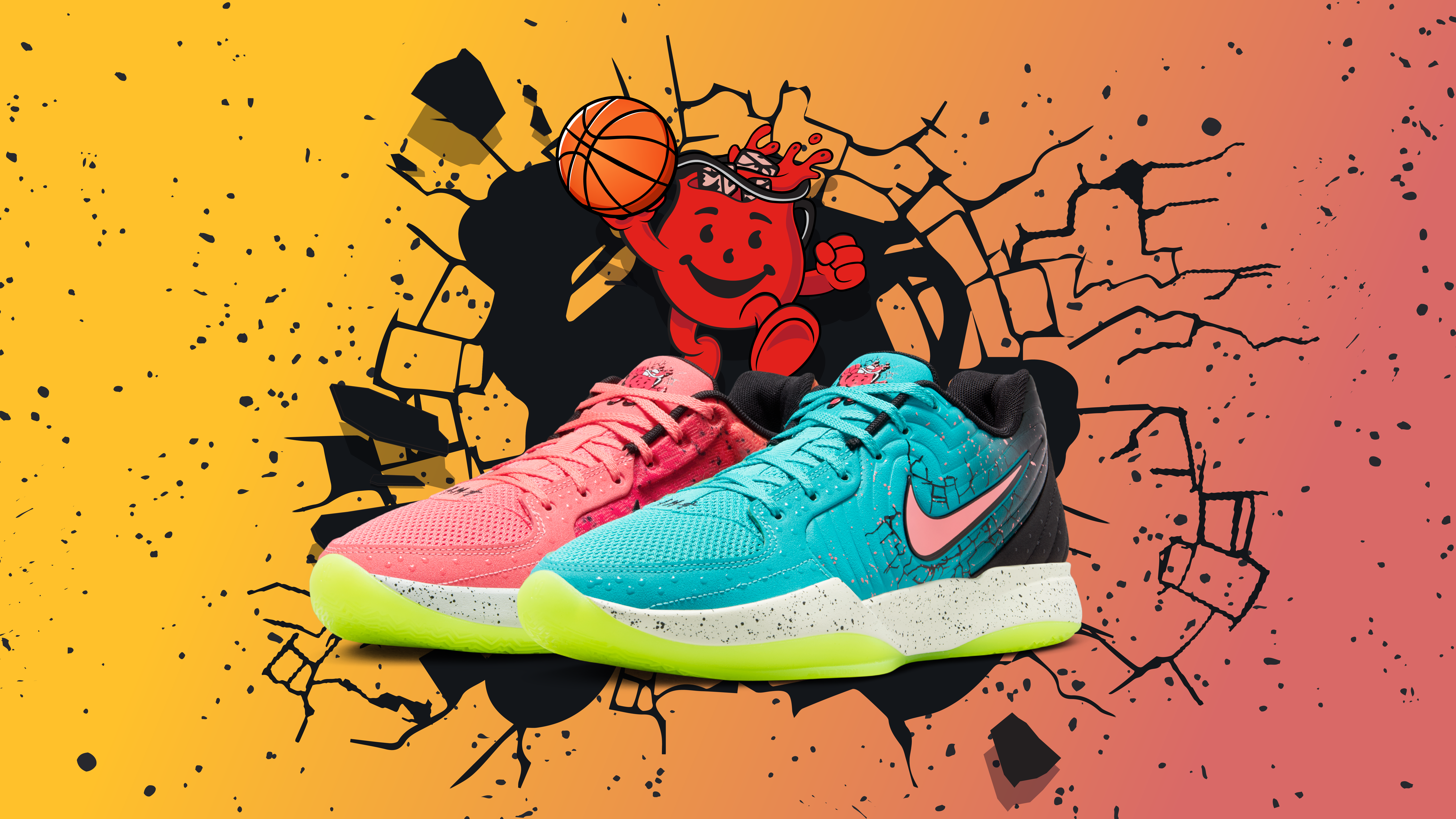A Newbie’s Guide To Decoding Douchey Wine Speak

Tennis ball. Rubber hose. Firewood. Fresh almonds. Clearly I’m about to go on a Walmart run, right? Not so much. What I listed were actual tasting notes wine connoisseurs and Sommeliers have actually used to describe what they’re tasting and smelling in wines. And for many of those that are on the outside looking in, wine culture itself and the nuances within appreciating wine are about as oddball as thinking that whatever you’re about to drink smells of asphalt and tastes of burnt toast — then considering such as a good thing.
To help us unravel the madcap world of wines and the cryptic and confusing language that comes along with it, I spoke with Coly Den Haan, a certified Sommelier and owner of female-driven wine shop, Vinovore, in Los Angeles, California.
For Den Haan, appreciating wine doesn’t have to include all the pomp and pretentiousness that it’s infamous for. The fact that she’s describing wines in her shop as “funky and rad like your favorite character actor,” “horse butt,” and “like driving a raspberry-colored convertible Fiat through the Italian Alps with the top down and your top off,” should be enough to cement her stance. Trust, we’re in good hands, friends. A newbie such as myself had plenty to learn in taking the douchey-ness out of wine culture.

IS ALL THAT SWIRLING, SNORTING, AND SWISHING NECESSARY?
Den Haan admits all that obnoxious wine swishing and shoving of one’s nose into the glass is still a bit necessary when it comes to tasting wine. They’re tools, she insists, to “awaken the wine in your glass.”
“If you want to do it in a corner so you don’t look like an asshole, with all the big sniffs and snorting or whatever, do it in a closed room. If you take a minute, and just be like, ‘Oh I do get fruit. Oh what kind of fruit,” your brain, kind of associates with those aromatics. It just becomes more of a second nature. That’s how people start blind tasting because they’ve trained their brain and they can start deducing.
When you’re swirling, what you’re doing is adding oxygen to that wine. That wine has been sitting in a bottle for however long — a year, 5 years, 20 years — so when you let it out, think of it like, stretching its arms. All that really is doing is adding oxygen to the wine to let it open up. So you’re releasing it from its little cage, and you’re giving it fresh air to let it spread its wings.”
CONSIDER THE LEGS
A wine’s ‘legs’ are scrutinized by wine lovers to help tell if the booze they’re drinking is up to snuff. “Legs are the drippings that come down in a glass after you swirl. The reason that people evaluate legs is sometimes it gives you a hint on how much alcohol is in the wine, or the viscosity of the wine. So the slower the legs fall, and the closer they are together, it can give you the indication that there’s more alcohol, or it’s been aged longer.
However, Den Haan warns that a wine’s legs and also its price may not be the most reliable ways to gauge quality.
“This isn’t a reliable rule because there are so many things that can happen with the glass itself: What it was cleaned with, if there’s spots, whatever. For price, I always tell people that they don’t need to spend a lot of money to have a really good wine. I feel like, especially with California, people get into this trap and a lot of it is marketing. I won’t name specific brands, but the wine is good, though it’s not worth hundreds of dollars a bottle.”

VARIETALS AND TANNING MAKE THE HAPPY JUICE
“Varietal is the grape. There’s tens of thousands of different varietals in the world. Cabernet sauvignon, pinot noir, these are all grapes. Tannin is what is found in the skin of the grapes. So, what most people don’t realize is that for all grapes, the juice inside is clear. It runs yellowish-clear. What gives the color is the skins and what gives a lot of the texture and aroma is the tannin, the skins. Tannin is only found in the skins and gives that sensation that dries your mouth. So imagine that back of your jaw feeling, that’s dry, really tannic, like chewy sometimes. The bigger the tannic wine, it almost feels like you’re chewing on a piece of stem or wood. For the most part, white wines don’t have tannins because they’re not made with skins. There are few exceptions with skin contact whites, like orange wine, which is kind of a buzzword right now. That would be white wine with skin contact.”
Take note, though, that a wine’s tannic characteristics aren’t the end all, be all when it comes to determining its flavor and personality.
“The counterpart of tannins is acid. So where acid makes your mouth water, tannin dries it up. So, you know, especially with red wine you want that balance. If you have a wine that has a lot of tannins but not enough acid, it’s going to be way too dry. You need that ideal juiciness to dry ratio.”
ALL WINE IS DRY (Except Dessert Wine)
“It’s the hardest thing to explain without sounding like a jerk. People come into the shop and they’re like, “Oh, I want a dry rosé.” If I was an asshole, I’d be like, “Um, all rosés are dry.” But, that’s not really the right way to say it. All normal wine is dry unless it’s dessert. What people are confused about is fruitiness, usually. I used rosé as an example because that’s the biggest thing right now.”
IS PAIRING WINE ROCKET SCIENCE?
For the average person looking to get into wine, pairing them with whatever meal you’re having can be a bit intimidating. Sure, there’s the perceived common knowledge of whites go with seafood and vegetables, and reds go well with meat. However, Coly breaks it down with a little more nuance for us.
“So there are some simple rules you can follow that can help you navigate and pair your food. One that I always like to say is, you can match the cuisine region with the region of the wine. Italy, France, Spain are very easy to do because the wines are there. They’ve been made there for hundreds and hundreds of years to go with that local, indigenous food. Beyond that, you kind of want to match and contrast. So you sometimes want to match flavor profiles, and then have some sort of contrasting element to compliment it, or kind of add some third taste, so to speak. For instance, if you have something really fatty, you’ll want to contrast it with a lot of acid, since you’re going to need that acid to clean up the fat. But if you have something that’s really fruity, with a really earthy dish, I do not suggest that. That’s where you want to kind of align your taste.”
In simpler terms, she states, “Really the food is the main star when you’re pairing. Wine is kind of just the co-star. So, the wine really helps you to cleanse your palate after each bite. That’s why the wine is there. So if it’s doing more or less, it’s not really doing its job.”

TENNIS BALL? REALLY?
“Have you ever smelled a wine where it literally smells like you opened a can of tennis balls? They exist, and it’s crazy and that’s the kind of thing that, yes, I feel like people are very pretentious about in the wine world in general.”
When you hear off the wall sensory notes of “musty blanket” or “new car smell” to describe the aromas and flavors of various wines, does it come off as obnoxious? Or are they just using reference points? Den Haan helps us understand the logic behind such wacky options.
“You know it’s kind of like an umbrella effect. As you learn to taste wine, you start categorizing main categories of what you’re smelling: I smell fruit, I smell minerals. Then from there, what kinds of fruit: Oh, pineapple. Tropical fruit. What kind of tropical fruit? Pineapple, mango, papaya. Essentially, these descriptions are just reference points. So the more you start pulling stuff out of this glass, the crazier and wilder it can get, which I think is fun. Whatever you’re finding in there, there are no rules and that’s what makes it fun. It can come off as pretentious, but it really shouldn’t be because wine is wild and crazy.”
RELAX, ENJOY. IT AIN’T THAT SERIOUS
For many daunted by the world of wine and are apprehensive about dipping their toes into the culture, it’s vital to keep in mind that it all really shouldn’t be taken so seriously. It’s just wine, after all, and Coly insists that it should be a fun experience overall.
“It’s supposed to be fun! It’s fucking fine, you know. Jesus, you’re not saving any lives with this shit. You don’t have to be an expert or even care that much about wine to enjoy it. You just have to appreciate your wine and go to your party and have your dinner and go to the pool and whatever.”






















